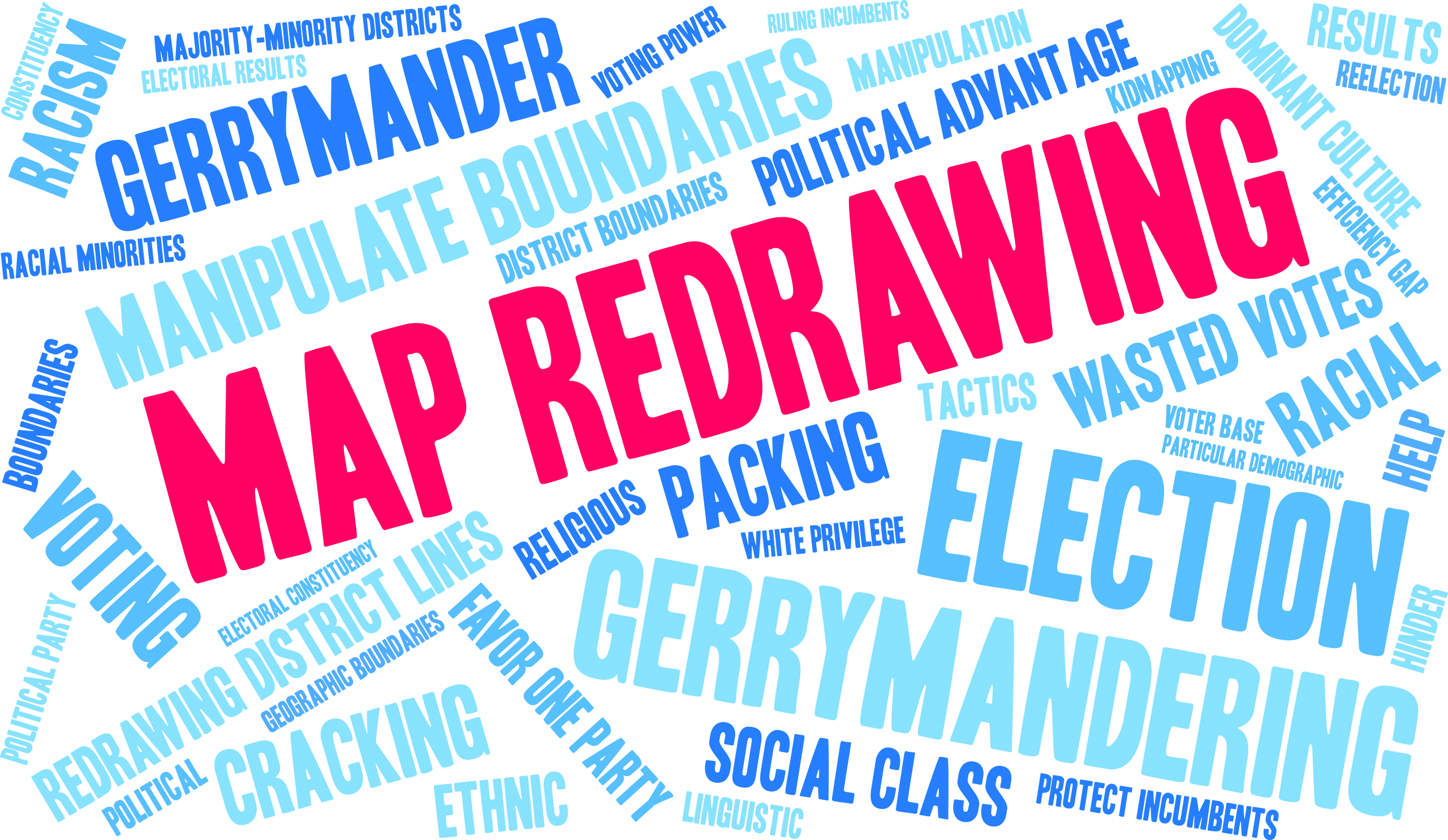7 Days Remaining
While the word “gerrymandering” may sound familiar to many thanks to high school civics class, there is still confusion about what it means exactly, and what its effects are. Gerrymandering is defined by Merriam Webster as: “the practice of dividing or arranging a territorial unit into election districts in a way that gives one political party an unfair advantage in elections.” This might seem straightforward, but the actual process itself is meticulous, even if the results seem nonsense on the map with bizarrely shaped congressional and legislative districts.
Every 10 years, states redraw the boundaries of their districts. There is a lot of behind-the-scenes done on the part of politicians to try to manipulate the map to work in their favor. This is called partisan gerrymandering, with its purpose to tip the scales in favor of one political party over another. Throughout U.S. history, partisan gerrymandering and redistricting efforts have gone hand-in-hand with racial discrimination. There is a specific type of gerrymandering referred to as “racial gerrymandering,” which is aimed at weakening the power of minority voters, but often, this comes in the form of a two-in-one with partisan gerrymandering.
The U.S. Supreme Court affirmed in the 1995 case of Miller v. Johnson that racial gerrymandering is a violation of constitutional rights, and upheld decisions against redistricting that is purposely devised based on race. This has been shown to go both ways in regard to Minority voters and White voters. However, federal courts have struggled with how to define the types of gerrymandering and the standards that should be used to determine which redistricting maps are unconstitutional.
The Brennan Center for Justice advocates for a solution of using independent redistricting commissions in every state and legal protections against extreme gerrymandering. Without this solution, “the result is election outcomes that don’t reflect what voters want, uncompetitive races that encourage politicians to cater to the extremes, and, too often, under-representation of communities of color.”
Both the Republican and Democratic party work diligently to ensure they have the most influence possible, and that is a given in a democracy. Of course each party is going to do what they can to maintain or establish their influence, but it is the extreme manipulation of the maps, and blatantly racial gerrymandering that is cause for much concern. The manipulation of maps is the manipulation of the people themselves, and this is where we need to remain informed citizens.
The nonprofit organization, Common Cause, put it simply: “In America, elections are supposed to represent the will of the people, not politicians. But partisan politicians manipulate voting maps to keep themselves and their party in power. We need to reform the rules and make the process of drawing districts impartial and transparent so our government is of, by, and for the people.”





Leave a Reply
Want to join the discussion?Feel free to contribute!